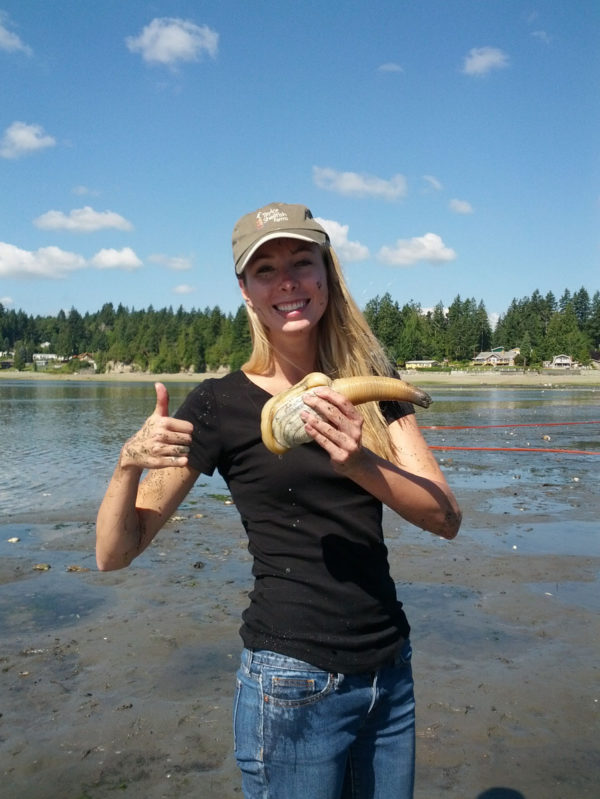

Butter clams, horse clams, and cockles were dried for trade.
Clam to horse clam to geo duck full#
The UHA also funds three full time biologists (two consultants and one DFO position), a number of part-time positions and pays for extensive water quality and paralytic shellfish poison (PSP) testing.ĭetails: Underwater Harvesters Association, PO Box 39005, 3695 W 10th Ave, Vancouver, BC, Canada V6R 4P1. It also pays for the monitoring of the fishery through the company Archipelago Marine Research. The UHA directly contributes by providing the financiallystrapped DFO with survey data, personnel and assistance to collect geoduck life history information. They also participate in steering committees and advisory groups with DFO to assist with management decisions. UHA members assist the DFO with the management of their fishery. These wholesalers sell these geoducks to Asian markets for even more money. Fishermen sold over $30 million worth of geoducks to BC plants in 1999. Geoduck fishermen pay to run their fishery and generate more revenue for their product than any other invertebrate fishery in BC, it says. "In fact, the geoduck fishery has become a model for other fisheries in the new millennium, " claims the Association. When planting is expanded coast-wide, there will be several boats and crews involved.ĭiving for geoduck clams is a fishery for the new millennium, according to the UHA, whose members are actively involved in the management and marketing of their catch. Planting began in the Strait of Georgia, on the east coast of Vancouver Island, and gradually a larger number of areas will be planted. To date, the survival has been varied at each of the planting sites, but results are "most encouraging as survival has been better than expected, " says the UHA. The mechanical planter lays hundreds of thousands of seeds. A harvesting plan will then be developed with the Department of Fisheries and Oceans (DFO). The number planted is determined by the survival of those planted geoducks to their harvest size in a study that will take six to ten years. The programme's objective is to plant 30% of the annual harvest quota each year. At the same time, the industry initiated R&D to build a seeding machine capable of mechanical planting on a commercial scale. The first planting trials were completed by hand using relatively small numbers of seed. This project was initiated solely by industry, without any requests from Federal Fisheries and Oceans, the agency responsible for the fishery. Members felt it was important to develop and refine enhancement technology, even though the existing fishery was not over-exploiting stocks. The UHA started enhancing geoduck populations in 1994. The fishermen plant the seed, and carry out the harvesting and processing operations. Island Scallops carries out all the geoduck hatchery and nursery production, and has also designed and built the underwater planting machine. They are air-freighted live in Styrofoam boxes with ice. The main market for BC's geoducks used to be in Japan, but China is currently the principal market. "They've seen the writing on the wall: they either enhance their lucrative fisheries by seeding or their fishery will decline." "A number of geoduck licence owners also harvest urchins, so now we're also producing red and green juvenile urchins for seeding.

They have done DNA work and disease work all on their own. "The fishermen themselves have used their own money to develop their R&D to do hatchery techniques. "It's an amazing success story that very few people know about, " Sanders tells FFI. "Ongoing survival studies, genetic and disease research - all funded solely by industry - are being completed."īC's geoduck fishermen have put significant resources into financing seeding production, according to Rob Saunders, president of Island Scallops (FFI January 2000). "Partnerships have been formed with Federal Fisheries and the aquaculture industry to ensure careful implementation of geoduck enhancement and aquaculture, " says Canada's west coast Underwater Harvesters' Association (UHA), which was founded in 1981 by BC geoduck and horse clam licence holders.

BRITISH Columbia's geoduck clam fishermen have invested in their future by initiating and funding a long-term enhancement programme in which seed (baby geoducks) are planted and monitored to augment wild populations, reports TOM WRAY.


 0 kommentar(er)
0 kommentar(er)
